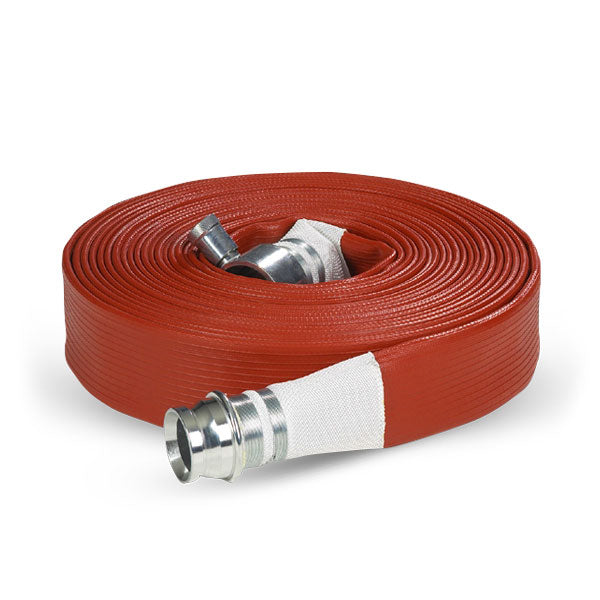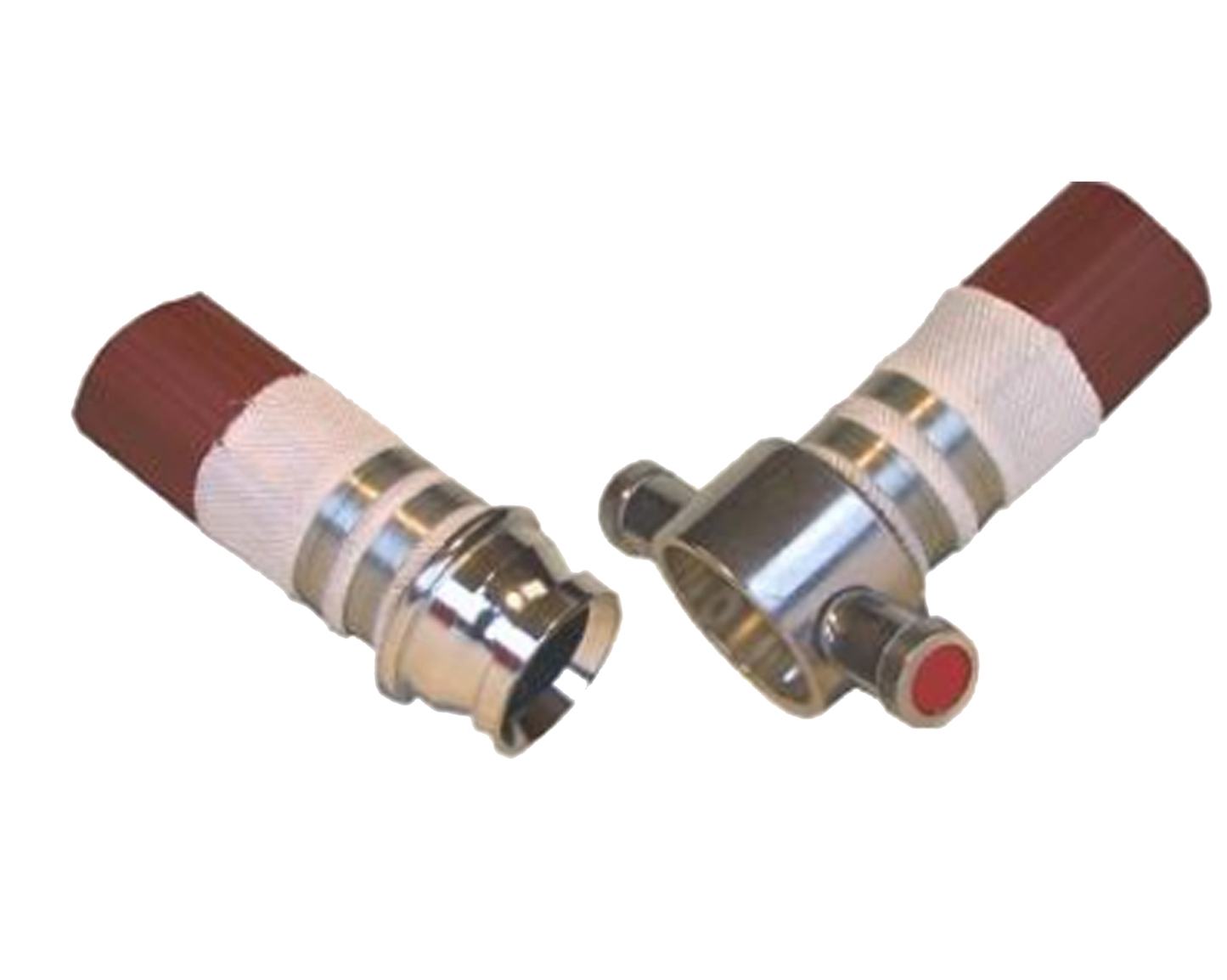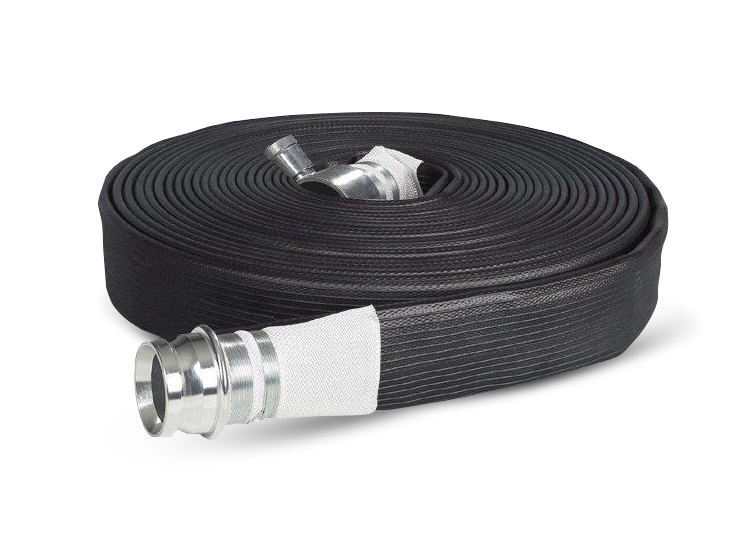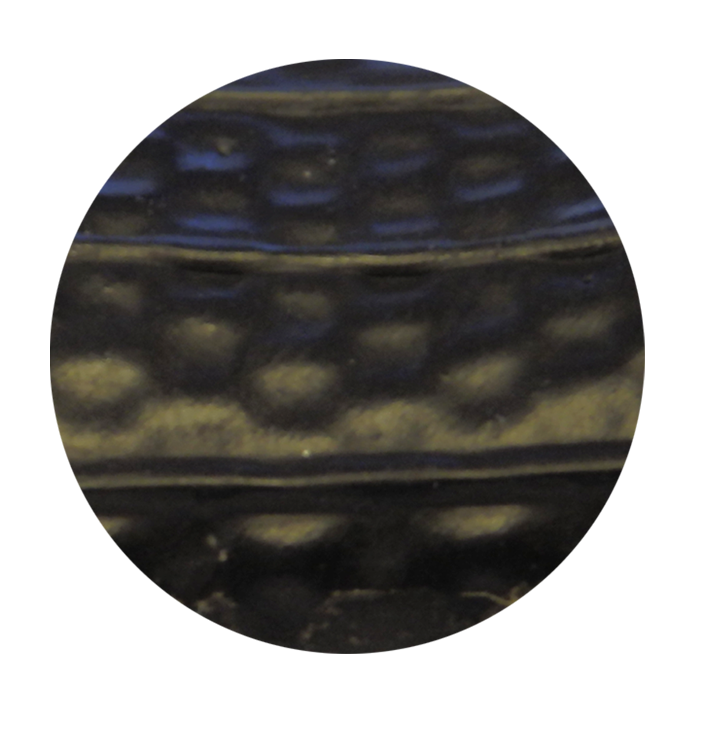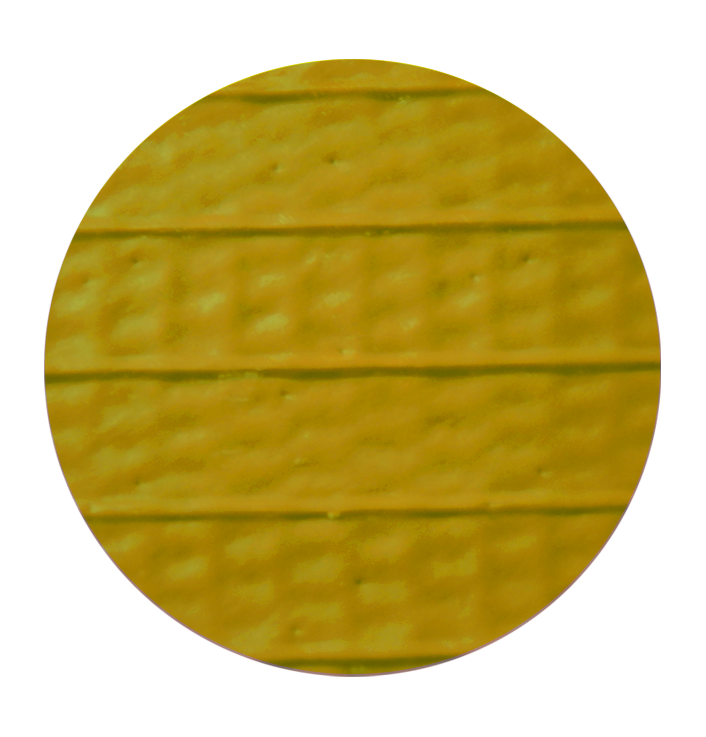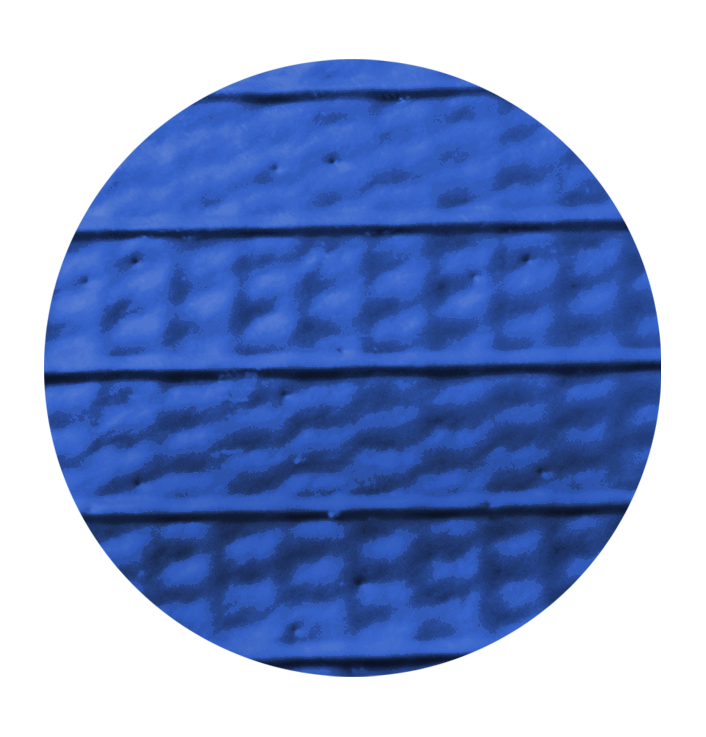Brigadier Hose to BS6391 Type 3 - Red (Hose Assemblies)
Brigadier Hose to BS6391 Type 3 - Red (Hose Assemblies)
- All stock hose assemblies coupled with BS336 Instantaneous couplings as standard.
- It Complies with BS 3691 Type 3 (60 bar) International Standards and many others.
- Uncoupled hose lengths available in various diameters - cut to order.
- All international coupling types available on request - wired-in for safety and security, with Stainless Steel wire.
Secure Payment Options:
Couldn't load pickup availability
Our Brigadier Type 3 layflat fire hose is a general purpose all synthetic heavy duty layflat hose complying with BS 6391 Type 3, approved and certified to DIN 14 811 : 2008-01 class 3. The hose is a high quality Nitrile-synthetic rubber which is extruded through the weave giving a ‘Unified’ construction. External ribs offer further resistance to abrasion and ease of handling. This hose requires no drying after use.
Its abrasion resistance properties provide contact resistance to oil, fuel and chemical products along with ozone weather resistance. The unified construction guarantees a smooth inner surface and low friction loss for a long service life with minimal maintenance requirements and easy repair.
The Brigadier Type 3 layflat fire hose is characterised by its heavy duty, high abrasion resistance and extremely long service life. Flexible and kink resistant structure produced with very low twist, it is a multipurpose hose suitable for a wide range of applications.
The Brigadier Type 3 layflat fire hose is principally used in the firefighting industry. However it is a multipurpose hose also commonly used within the shipboard and marine industry, on refineries and construction sites, in agriculture and irrigation, general industrial use and for all wash-down applications.
Hose Jacket & Lining:
The hose jacket is a 100% polyester high tenacity yarn with circular woven. The unified construction is made of a high quality Nitrile synthetic rubber. Resistant to ozone and to external contact with oil products. The inner lining guarantees a smooth surface and low friction loss.
Hose Lengths:
All standard lengths can be supplied from stock, however Parsch UK specialise in the cutting and assembly of non-standard lengths to satisfy customers’ individual requirements.
The maximum change in length – 4% The maximum change in diameter – 4%
Our Brigadier Type 3 layflat fire hose is a general purpose all synthetic heavy duty layflat hose complying with BS 6391 Type 3, approved and certified to DIN 14 811 : 2008-01 class 3. The hose is a high quality Nitrile-synthetic rubber which is extruded through the weave giving a ‘Unified’ construction. External ribs offer further resistance to abrasion and ease of handling. This hose requires no drying after use.
Its abrasion resistance properties provide contact resistance to oil, fuel and chemical products along with ozone weather resistance. The unified construction guarantees a smooth inner surface and low friction loss for a long service life with minimal maintenance requirements and easy repair.
The Brigadier Type 3 layflat fire hose is characterised by its heavy duty, high abrasion resistance and extremely long service life. Flexible and kink resistant structure produced with very low twist, it is a multipurpose hose suitable for a wide range of applications.
The Brigadier Type 3 layflat fire hose is principally used in the firefighting industry. However it is a multipurpose hose also commonly used within the shipboard and marine industry, on refineries and construction sites, in agriculture and irrigation, general industrial use and for all wash-down applications.
Hose Jacket & Lining:
The hose jacket is a 100% polyester high tenacity yarn with circular woven. The unified construction is made of a high quality Nitrile synthetic rubber. Resistant to ozone and to external contact with oil products. The inner lining guarantees a smooth surface and low friction loss.
Hose Lengths:
All standard lengths can be supplied from stock, however Parsch UK specialise in the cutting and assembly of non-standard lengths to satisfy customers’ individual requirements.
The maximum change in length – 4% The maximum change in diameter – 4%
